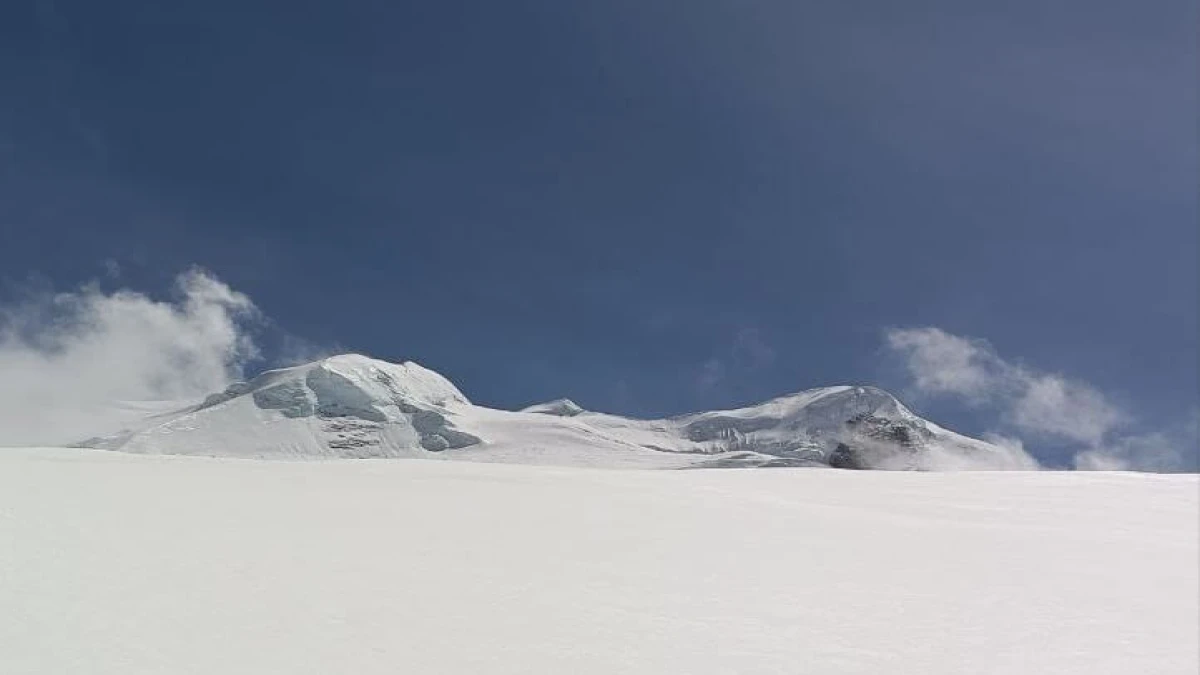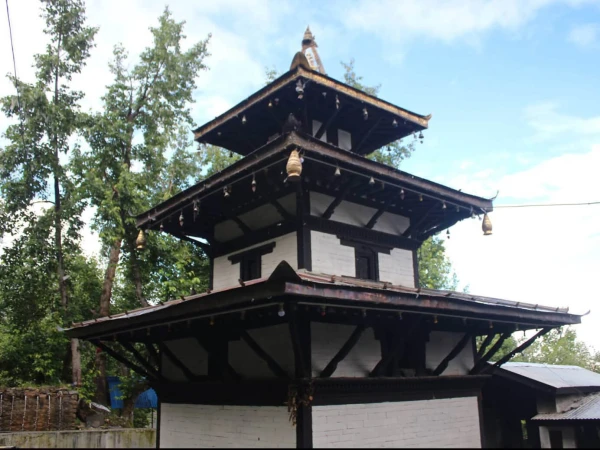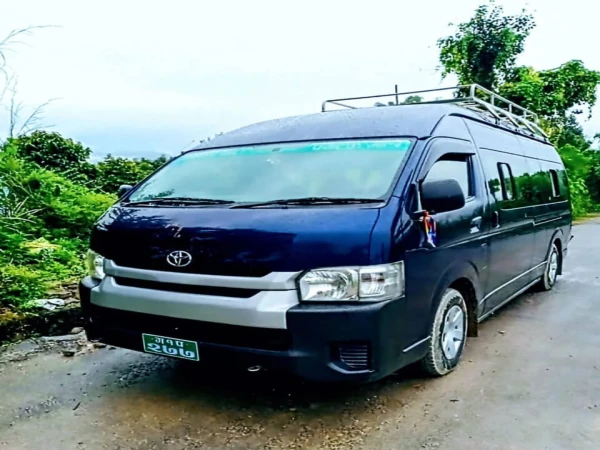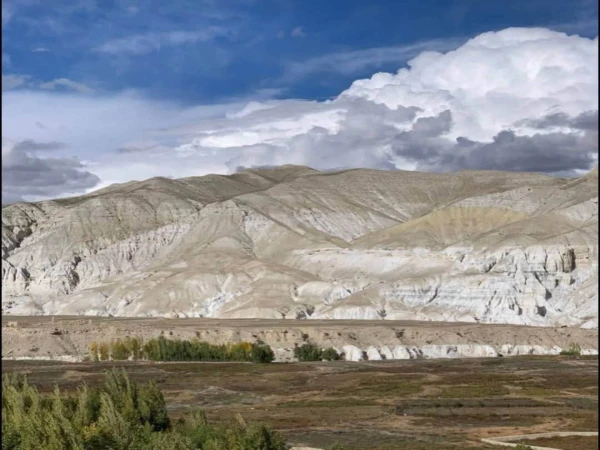Peak Climbing in Nepal is a dream for adventure lovers. From trekking peaks like Island Peak and Mera Peak to towering peaks like Everest and Manaslu, every expedition demands preparation, endurance, and the right gear.
A well-packed bag can make your adventure enjoyable and poor packing can turn a climb into a struggle. This guide covers everything that you need while peak climbing, from clothing and footwear to climbing gear and other essentials. Read this guide, pack wisely, and climb safely, comfortably, and confidently.
Clothing Layers
Base Layer
- Item: Thermal tops & bottoms, moisture-wicking socks.
- Purpose: They wick sweat, keep skin dry, and prevent chilling.
- Material: Synthetic or Merino wool. Avoid cotton because it absorbs moisture and makes you cold..
- Usage: It is worn directly on the skin, so it keeps you dry during climbing, trekking, and training rotations.
- If you use merino wool, then that can be used for days without washing.
- Tip: Bring 2-3 base sets to rotate.
Mid Layer:
- Items: Fleece jacket, insulated vest, softshell pants.
- Purpose: Traps body heat to maintain warmth.
- Material: Fleece, softshell, or light down jackets.
- Usage: It is worn over the base layer. It keeps you warm during camp evenings, mild climbs, and rest periods.
- Tip: Choose a breathable mid-layer to allow sweat to escape while keeping warmth.
Outer Layer:
- Items: Hardshell jacket with hood, hardshell pants, gloves, gaiters.
- Purpose: Shields you from wind, snow, rain, and ice.
- Materials: Gore-Tex, event, or high-quality waterproof and windproof shells.
- Usage: It is worn over base and mid layers. It is essential during summit pushes, icy slopes, and storms. It must be durable, breathable, and resistant to harsh weather.
- Tip: Check for pit zips and adjustable hoods to make long climbs more comfortable.
Extra Layer:
- Items: Expedition down parka with hood, Down pants or insulated overpants, Extra mittens and glove liners
- Purpose: Provides maximum insulation during the coldest nights and in the highest parts of the mountains above (7,000-8,000 m)
- Usage: Worn over all other layers during summit day or extreme cold nights. It also protects against frostbite, wind chill, and oxygen-depletion cold.
- Tip: Lightweight but ultra-warm. Look for compressible down jackets to save space in your pack.
Footwear
- Trekking boots: Waterproof, high-ankle boots for support and grip. Single boots for trekking peaks, and double boots for high-altitude climbs.
- Crampons: It is a metal-spiked traction devices attached to boots for grip on snow and ice. It is needed for technical and extreme peaks.
- Camp slippers: Lightweight, insulated shoes or slippers for evenings at base or high camps. Comfortable and easy to pack.
- Socks: Merino wool or synthetic socks to prevent blisters and keep feet warm. Rotate daily, so bring extra pairs of socks.
Head and HandGear
- Balaclava or neck gaiter: It shields your face and neck from cold winds, sunburn, and dust. So, it is a must-have for high altitudes and summit days.
- Hat or sun cap: For lower altitude and sunny days to protect yourself from UV rays during long trekking hours.
- Warm hat/beanie: It keeps your head warm in freezing camps or night stays. Choose wool or fleece material for extra warmth.
- Sunglasses with UV protection: It is essential for snow glare and eye safety. Go for category 4 glacier glasses with side shields for extra protection.
- Gloves liners and insulated gloves: Wear thin liners under waterproof insulated gloves. Keeps your hands warm and flexible. For extreme peaks, carry extra pairs in case of frost or wetness.
Camping & Sleeping Gear
- Sleeping bag: Choose a down sleeping bag rated to at least -20°C or lower for high-altitude nights. It should be warm, lightweight, and compressible.
- Sleeping mat/foam pad for insulation: It adds comfort and protects you from cold ground. Use an insulated air mat of foam pad for extra warmth during base camp nights.
- Lightweight personal tent: Tent is usually provided on expeditions, but carrying your own compact tent helps for flexibility or emergencies. Go for a four-season, wind-resistant tent.
Climbing equipment
- Climbing Boots: Boots should be specialized double or triple-layer mountaineering boots built for snow and ice. It keeps your feet warm and stable above 6,000m. Always make sure they fit well with crampons.
- Harness: It secures you to ropes while climbing or rappelling. Choose an adjustable, padded one for long hours and comfort.
- Karabiners: It is a metal clips used for attaching ropes and gear. Carry a mix of locking and non-lockung carabiners. It should be strong, lightweight, and reliable.
- Ascender: It helps you climb fixed ropes efficiently on steep sections. A must-have for technical ascents
- Descender: It is used for controlled descent down the rope. Simple, safe, and essential for every climber.
- Snow Bar/ Snow Anchor: It provides safety and stability on snow slopes. It is used to fix ropes or secure positions during ascent.
- Belay Device: It is used for controlling rope during belaying or descent. Make sure it’s compatible with your rope diameter and easy to handle with gloves on.
- Carabiners and quickdraws: Carabiners is a strong metal chip that connects ropes and gear. Quickdraws are pairs of carabiners joined by a sling. It is used for efficient movement on technical routes. Carry both locking and non-locking types of carabiners.
- Ascenders and descenders: Ascenders help you climb fixed ropes safely, while descenders control your downward movement. Keep one of each and make sure they match your rope size.
- Ice Tools: Ice tools include ice axes, ice hammers, or technical tools. They are used for steep icy slopes or vertical ice climbing. Choose lightweight but sturdy ones for efficient swings.
- Helmet: It protects your head from falling ice, rocks, or gear. It must be of lightweight, ventilated, and durable. Always wear it during climbs or near rock faces.
- Rope: Dynamic ropes for climbing and static ropes for hauling or fixing. Usually provided by expedition teams, but carry your personal safety line if possible.
- Headlamp & Batteries: It is a must-have for early summit and summit pushes in the dark. Bring extra batteries because cold drains power fast at high altitudes.
Personal essentials:
- Expedition Backpack, 65L: It is your main bag for carrying gear during the expedition. It should be strong, spacious, and comfortable with waist support and adjustable straps.
- Trekking Backpack, 30L-40L: It is for daily climbs or short treks. It carries water, snacks, and essentials that you need.
- Trekking / Climbing Poles: It helps you with balance and reduce strain on knees, especially during descents. Adjustable poles are best for steep trails.
- Raincoat: It should be lightweight and waterproof. It keeps you dry during sudden mountain showers.
- Daypack cover: Protect your backpack from rain, snow, and dust. This one is very useful.
- Garbage bag: Carry one with you to keep the trail clean.
- First-aid kit: This kit includes altitude sickness pills, painkillers, bandages, and blister patches. A personal medical kit is a must for every climbers.
- Toiletries / Personal Hygiene: Toothbrush, toothpaste, biodegradable soap, towel, and feminine hygiene products. Pack small and lightweight.
- Sunscreen and Lipbalm: Bring it of High SPF to protect your skin from harsh UV rays and dry winds.
- Water bottles and purification tablets: You need to stay hydrated and safe. So carry at least two bottles and purification tablets for refilling from natural sources.
- Snacks & energy bars: It is a quick source of energy during long climbs. Chocolates, nuts, and protein bars work best.
- Wet wipes/travel tissues: It is best for quick cleaning when showers aren’t available.
Documents & Permits:
- Valid Passport: Make sure your passport is valid for at least six months from your entry date into Nepal. And also keep it in a waterproof pouch to protect it from rain and dust during the trek
- Nepal Visa: Most of the climbers can get a visa on arrival at Tribhuvan International Airport, Kathmandu. You can also apply online beforehand for faster processing. Keep some cash (USD preferred) for the visa fee.
- Passport-size Photos: Carry at least 4 to 6 passport-size photos for climbing permits, TIMS card, and trekking registrations.
- Cash and Credit Cards: ATMs are available only in cities like Kathmandu or Pokhara. It may not be in high mountain regions. So you need to carry enough Nepali rupees in cash for personal expenses, tips, and emergencies. Credit cards might also not always work in remote areas.
- Climbing permit & TIMS card: These are most essential for legal access to the mountains. The Nepal Mountaineering Association (NMA) issues peak climbing permits, and a TIMS (Trekkers’ Information Management System) card ensures your trek is registered and safe. Himalayan Partner helps you get it both.
- Travel insurance: Get travel insurance that covers high-altitude trekking and helicopter evacuation.
- ID photos: Carry photocopies of your passport, visa, and permits in a separate pouch. Keep digital copies on your phone and email as backup.
Miscellaneous Items
- Contact lenses: If you wear lenses, bring enough pairs for the whole trip plus a backup. The mountain dust and wind can dry your eyes, so pack eye drops too.
- Power glasses: Essential for clear vision at high altitudes. Carry a spare pair because replacements are impossible to find in remote regions.
- Umbrella: Also, carrying a small foldable umbrella is surprisingly useful during light rain or snow.
- Padlocks: Carry a few mini padlocks to secure your duffel bag, tent zippers, or locker in tea houses. A small precaution for peace of mind.
- Power bank / solar charger: Electricity is unreliable in mountain villages. So, bring a high-capacity power bank or solar charger to keep your phone, camera, and headlamp powered throughout the climb.
- Camera / GoPro: Capture your adventure. Don’t forget extra memory cards and batteries since cold weather drains them quickly.
- Lightweight book or journal: A good read or travel diary helps you during rest days or chilly nights in base camp.
- Extra batteries for gadgets: Cold temperatures drain batteries fast. So, carry spares for your headlamp, camera, and communication devices.
- Multi-tools: A Swiss knife or multi-tool comes in handy for quick repairs, cutting ropes, or fixing gear.
- Sanitary Pads / Menstrual cups (for women): It is a must-have for comfort and hygiene in remote areas where supplies are limited. Choose biodegradable options if possible.
- Razor and shaving cream (for men): It is essential for personal grooming during longer expeditions.
Packing Tips & Tricks:
- Pack light but smart: Carry only those things that are essential. Every extra kilo matters.
- Use dry bags: Use dry bags to keep your gear organized and protected from moisture.
- Keep warm gear handy: Weather changes fast in Nepal’s mountains, so a jacket, gloves, and a hat should be kept where it is easy to reach.
- Layer wisely: Light base, mid, and outer layers work better than one heavy cloth.
- Balance your backpack: Keep heavy gear close to your back for stability.
- Protect electronics: Cold drains batteries fast. So store electronics inside your sleeping bag at night.
- Carry quick snacks: Nuts or energy bars give instant fuel during tough climbs.
- Keep documents safe: Use a waterproof pouch for passports and permits.
- Check weight limits: Avoid overpacking before flights or porter arrangements.
- Add small comforts: A neck warmer or mini pillow can make tough days easier.
Conclusion:
Packing List for a peak climbing in Nepal isn’t just about throwing things in a bag. It’s about being prepared to face every challenge that the mountain brings. From your boots to climbing gear and personal items, every piece of equipment matters.
A good packing list can make your expedition safer, lighter, and more enjoyable. Whether you’re aiming for a 6,000 m trekking peak or a challenging 8,000 m expedition, pack smart, stay organized, and always double-check your gear before leaving Kathmandu. If you need any help to prepare for your Himalayan climb in Nepal, then contact Himalayan Partner for a customized packing checklist and expedition support.





